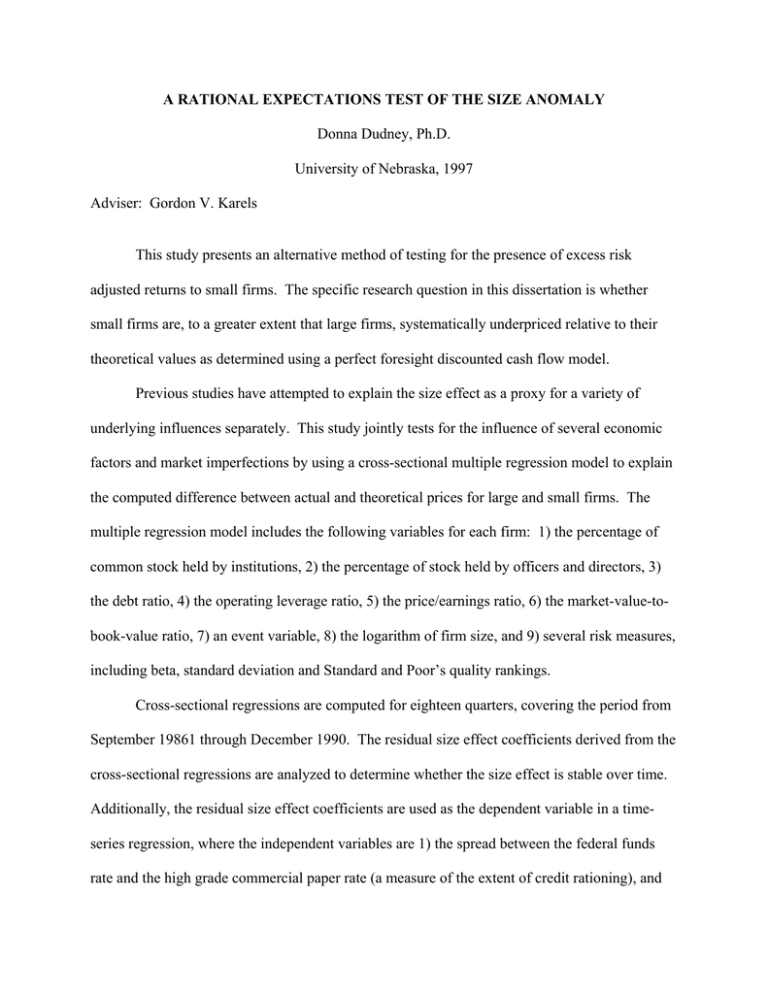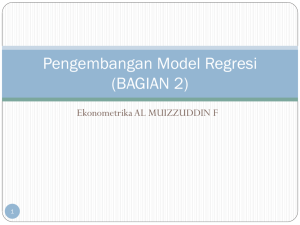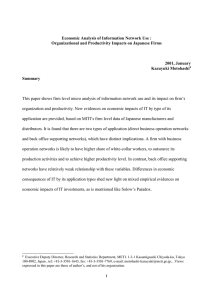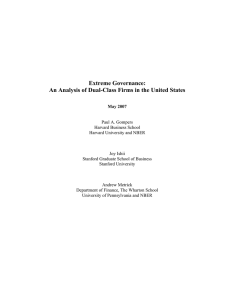A RATIONAL EXPECTATIONS TEST OF THE SIZE ANOMALY Donna Dudney, Ph.D.
advertisement

A RATIONAL EXPECTATIONS TEST OF THE SIZE ANOMALY Donna Dudney, Ph.D. University of Nebraska, 1997 Adviser: Gordon V. Karels This study presents an alternative method of testing for the presence of excess risk adjusted returns to small firms. The specific research question in this dissertation is whether small firms are, to a greater extent that large firms, systematically underpriced relative to their theoretical values as determined using a perfect foresight discounted cash flow model. Previous studies have attempted to explain the size effect as a proxy for a variety of underlying influences separately. This study jointly tests for the influence of several economic factors and market imperfections by using a cross-sectional multiple regression model to explain the computed difference between actual and theoretical prices for large and small firms. The multiple regression model includes the following variables for each firm: 1) the percentage of common stock held by institutions, 2) the percentage of stock held by officers and directors, 3) the debt ratio, 4) the operating leverage ratio, 5) the price/earnings ratio, 6) the market-value-tobook-value ratio, 7) an event variable, 8) the logarithm of firm size, and 9) several risk measures, including beta, standard deviation and Standard and Poor’s quality rankings. Cross-sectional regressions are computed for eighteen quarters, covering the period from September 19861 through December 1990. The residual size effect coefficients derived from the cross-sectional regressions are analyzed to determine whether the size effect is stable over time. Additionally, the residual size effect coefficients are used as the dependent variable in a timeseries regression, where the independent variables are 1) the spread between the federal funds rate and the high grade commercial paper rate (a measure of the extent of credit rationing), and 2) a dummy variable to capture seasonality in the residual size effect data. The time series regressions test the hypothesis that shifts in the relative magnitude of the residual size effect correspond to periods of credit rationing. Results of the cross-sectional regression equations indicate that the residual impact of size is insignificant for the period as a whole. The time series regressions support the hypothesis that size proxies at least in part for differing credit crunch sensitivity between small and large firms.






